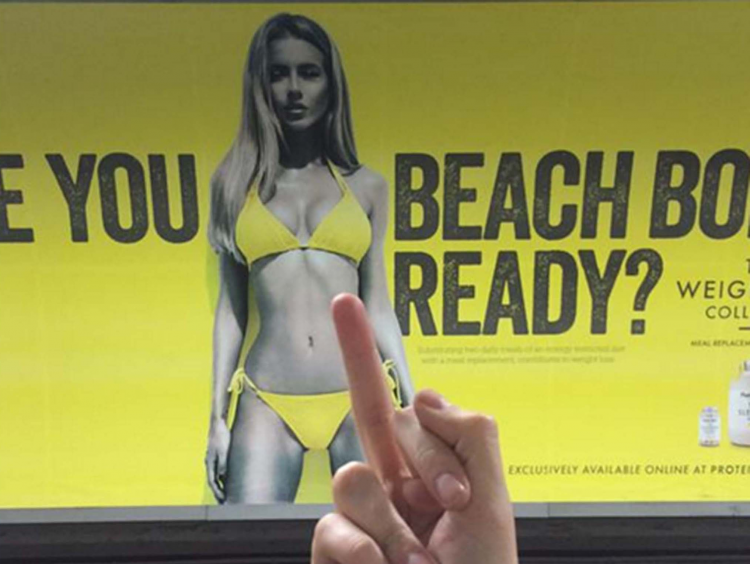Body Types: The Consumer Strikes Back

In April this year, viral outrage was sparked over a weight-loss advertisement in London underground stations showing a slender blonde model next to the question: “Are You Beach Body Ready?”
Many Londoners believed the image was intended to give women subconscious feelings of inadequacy, exploiting their insecurities to increase sales of the “meal replacements and supplements” being advertised. However, it ended up having quite the opposite effect. Several women fought back with images of their own on social media, the conversation went viral, and a full-blown protest exploded. Protestors vandalized the ad with snarky scribblings and then snapped a photo to share online.
The UK Advertising Standards Authority received 378 complaints about the advertisement. According to the ASA’s ruling, however, the ad was non-offensive and could not be removed on those grounds (the campaign was, in fact, already in the process of being removed due to health claims that had not been authorized by the European Union). Though the wave of protests was unsuccessful in forcing the ad’s removal, it provided a powerful community for women who disagreed with the image’s potentially harmful message and allowed their voices to resound internationally. It also served as a warning to other advertisers about how the masses can respond to the portrayal of women’s bodies in 2015. Ten years ago, this could not have happened.Promoting body positivity through social media has become a popular practice in recent years, giving power to the everyday consumer who wishes to publically reject the “ideal” body type that advertisements have established in the past.
Has this rebalancing of power been a strong contributor to the body-positive advertising that is becoming increasingly prevalent in Western society? It would be difficult to argue otherwise. When a high-profile company such as Victoria’s Secret creates a campaign that sparks controversy regarding its perceived promotion of unhealthy body images, consumers can easily strike back by tweeting directly to the company that has offended them. Multiply that tweet by a couple thousand and the company is forced to take action. After Victoria’s Secret’s “The Perfect Body” campaign was heavily criticized online, the company changed the campaign’s title to “A Body For Every Body.” While the images within this campaign were unaltered, the prompt title change plays testimony to the amount of power in the literal hands of the everyday consumer with a smart phone.
Another example occurred in 2014 when Target was caught photo shopping the body of a junior-size bikini model. The image was quickly taken off the company’s website, but several bloggers and social media users were able to capture the photo before it was removed, subsequently blasting it all over the internet. Target received an enormous amount of whiplash for this blunder and was forced to respond with a public apology.Non-coincidentally, Target named their 2015 swimwear ad campaign “Target Loves Every Body” and used images featuring women of varying size and race. The company made the sugarcoated claim: “We know there is no ‘one suit fits all’ and wanted to help women feel confident this summer and empowered to try different styles, no matter their size or shape.”
Never before have consumers had the power to alter advertising in such a quick and efficient way. These days everyone concerned about the harmful effects of advertising to her daughter’s self-esteem -- from stay-at-home moms to high-powered CEOs -- have a way for their voice to be heard and responded to. Despite their increasingly studied and discussed participation in disrupting "natural" human interaction, social platforms are largely to thank for the surge in body-positive advertising.












